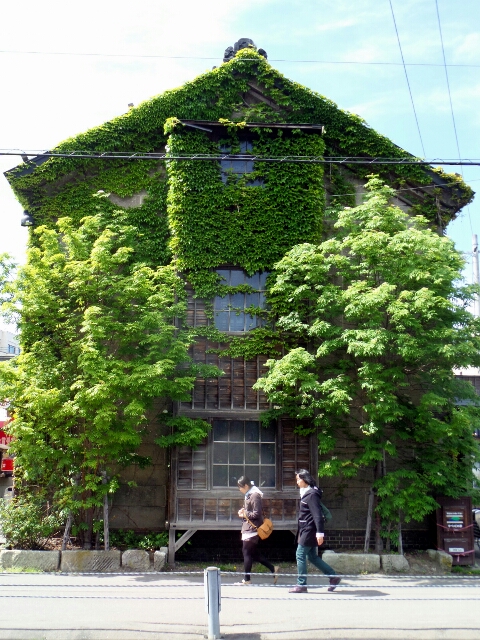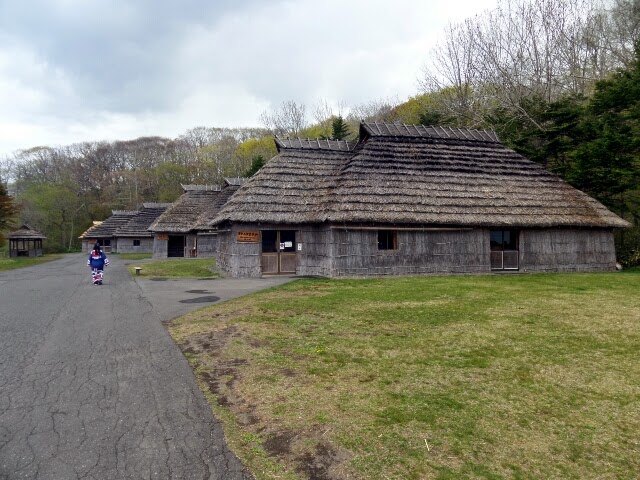Narita to Sapporo
 |
| Ramen number 1 - Spicy Narita Ramen with Asahi Beer |
To get from T2 to T3 at Narita Airport, follow the color coded path, complete with passing lanes, resting benches and drink vending machines. Distance to go is clearly marked.
 |
| Narita Airport walkway to T3, Low Cost Carrier (Jetstar) Terminal |
Sapporo (
map) is laid out in a grid pattern wide wide streets, unlike many Japanese cities. The are a few old European style buildings which look a little strange in modern Japan.
 |
| The Clock Tower in an old wooden building |
 |
| Former Government Building |
 |
| Cherry blossoms reflected in a pond at the Government Building |
 |
| Huh? Just go to the platform that has your departure time - that will be your train |
Otaru
Otaru is a port about 30 minutes by train from Sapporo. It was authorized as a foreign trading port in the 1800's and the European heritage buildings and character make it a hot tourist destination for Japanese.
 |
| Otaru Canal and Warehouse |
 |
| One of the old stone buildings, now a restaurant |
 |
| Vine covered house |
 |
| Japanese Maple makes a beautiful small garden |
Ramen Alley is the place to go for Sapporo Ramen. Here the Ramen is made with Miso. Corn and butter are added sometimes.
 |
| Ramen Alley, early evening |
 |
| Is this the best Ramen joint in town? |
 |
| Sapporo Miso Ramen |
 |
| Sapporo Ramen with Corn and Butter |
We went out for a Mother's Day feast of jingisukan (Genghis Khan). The story is ....
Mongolian soldiers didn't waste time preparing meals. When they were hungry they killed a sheep, made a fire and put their helmets on it. Then added vegetables, strips of the lamb, broth and noodles for a quick all in one dish.
 |
| Mongolian Soldier's Helmet |
 |
| Add vegetables and sprouts, cook in a broth |
 |
| Then the meat (lamb) |
 |
| After eating the meat add udon noodles |
 |
| Like the Mongolian Soldiers, nothing is left |
Okonomyaki
Okonomyaki means "as you like it, grilled". It is a Japanese savory pancake make with yam flour and cabbage. We went for the pork and spring onions, best one we've ever had!
 |
| Okonomyaki, before |
 |
| Okonomyaki, ready to eat |
Sapporo Beer
Always been keen on Sapporo beer so we couldn't miss the beer tasting at the old Sapporo Brewery.
 |
| Old Sapporo Brewery |
 |
| Cheers! |
The Ainu People
The Ainu are the indigenous people of Hokkaido. Now mostly absorbed into the Japanese, it is thought that about 20,000 remain. They had their own language, culture and customs. About an hour by train from Sapporo, there's a small "village" dedicated to the Ainu way of life.








































